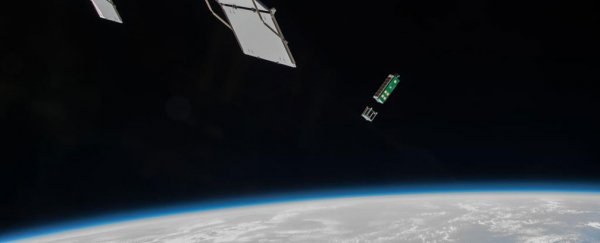Earth's got a lot going for it, all things considered, but its resources are evidently somewhat finite. So shouldn't we be looking to the stars above in order to strike upon the next natural resources boom? That's the thinking behind Planetary Resources, a US-based ' asteroid mining company', which launched its first spacecraft last week.
The test vehicle, Arkyd 3 Reflight (A3R), successfully deployed from the International Space Station's Kibo airlock and began a 90-day testing mission designed to scrutinise the company's avionics and control systems. Planetary Resources intends to use the lessons learned from A3R's demonstration flight to refine its space-faring technologies, such that future vessels will actually be capable of going prospecting in space.
"Our philosophy is to test often, and if possible, to test in space. The A3R is the most sophisticated, yet cost-effective, test demonstration spacecraft ever built. We are innovating on every level from design to launch," said Chris Lewicki, the company's president and chief engineer, in a press release. "By vertically integrating the system at our facility in Redmond, we are in constant control of every component, including the ones we purchase off the shelf and the others that we manufacture using 3D printers."
The ultimate goal is to send spacecraft out into the Solar System to mine near-Earth asteroids that may be rich in resources. Yes, it's more than a little reminiscent of Armageddon, but hopefully it won't turn out to be quite so far-fetched. Planetary Resource's investors include Google's Larry Page and Eric Schmidt and Virgin's Sir Richard Branson, so there's some serious support for the company's ambitious vision to mine space.
"The successful deployment of the A3R is a significant milestone for Planetary Resources as we forge a path toward prospecting resource-rich asteroids," said Peter H. Diamandis, Planetary Resources' co-founder and co-chairman. "Our team is developing the technology that will enable humanity to create an off-planet economy that will fundamentally change the way we live on Earth."
Once the company learns what it can from A3R's avionics testing, the spacecraft's successor, Arkyd–6 (A6), will launch later in the year. The next vessel will incorporate a mid-wave infrared imaging system designed to detect the presence of water and water-bearing minerals in near-Earth asteroids. A6's first tests will take place on Earth before the vessel is launched into orbit to ultimately prove whether space-based mining lies in humanity's near future.
"Asteroid mining might sound like a science fiction topic, but our company is deploying technology into space and even the governments of the world are taking up this topic and creating the policy and legal frameworks to support this activity," Lewicki told the ABC's Clint Jasper. "So this isn't an activity that you'll have to wait for your grandchildren to enjoy. It is something we'll see unfold in front of our eyes in the next several years."
